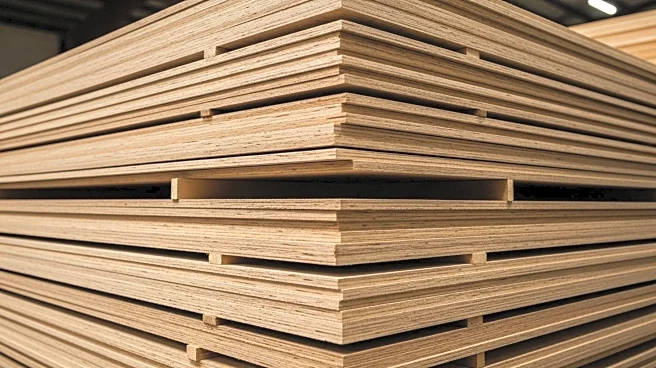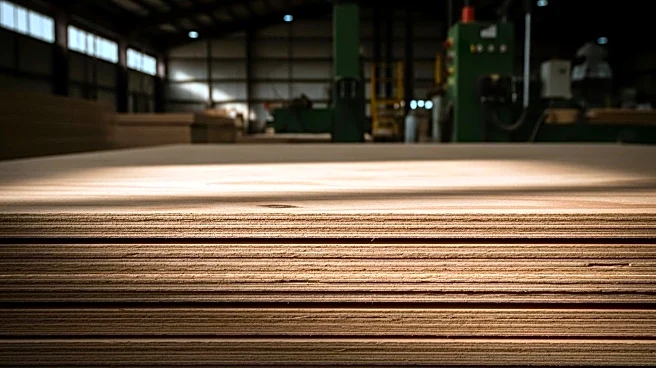What's Happening?
Roseburg Forest Products, a member of the Decorative Hardwoods Association, has announced the cessation of operations at its last remaining hardwood plywood plant. This decision marks the company's exit from the hardwood plywood market, a sector it has been involved in for decades. The company cited the significant shift in the market towards lower-cost imports, which now account for approximately 80% of the U.S. market, as the primary reason for this strategic move. Roseburg Forest Products will continue to produce medium density fiberboard (MDF), which is utilized in the manufacturing of laminate flooring.
Why It's Important?
The decision by Roseburg Forest Products to cease hardwood plywood production highlights the growing impact of international competition on U.S. manufacturing industries. The dominance of lower-cost imports in the hardwood plywood market reflects broader challenges faced by domestic producers in maintaining competitiveness. This shift could lead to increased reliance on imported materials, affecting local economies and employment within the sector. The company's focus on MDF production suggests a strategic pivot to areas where it can maintain a competitive edge, potentially influencing market dynamics in the flooring industry.
What's Next?
As Roseburg Forest Products exits the hardwood plywood market, industry stakeholders may need to reassess their strategies in response to the increasing prevalence of imports. This could involve exploring new markets or investing in technologies to enhance competitiveness. Additionally, the shift may prompt discussions on trade policies and their impact on domestic manufacturing. The company's continued production of MDF indicates a potential focus on innovation and efficiency in this area, which could lead to new opportunities in the laminate flooring market.
Beyond the Headlines
The exit of Roseburg Forest Products from the hardwood plywood market raises questions about the long-term sustainability of domestic manufacturing in the face of global competition. It underscores the need for U.S. manufacturers to adapt to changing market conditions and consider diversification strategies. The situation also highlights the importance of trade policies in shaping industry landscapes and the potential need for policy adjustments to support domestic producers.











